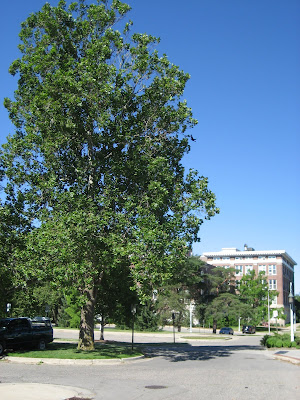
On one of our walks this spring in Cary, North Carolina we noticed a vine coming out of the woods, and snaking across the greenway. Later, when we were in the mountains near Asheville, we found the same vine completely covering hillsides, and enveloping trees. We identified it as Kudzu. or due to its out of control growth by one of its many nicknames, like "mile a minute vine," or " a foot a night vine."

So, what is with this Kudzu anyway? Kudzu was introduced from Japan into the United States in 1876 at the Philadelphia Centennial Exposition, where it was promoted as a forage crop and an ornamental plant. From 1935 to the early 1950s, the Soil Conservation Service encouraged farmers in the southeastern United States to plant kudzu to reduce soil erosion as explained above. The Civilian Conservation Corps planted it widely for many years.

It was subsequently discovered that the southeastern US has near-perfect conditions for kudzu to grow out of control — hot, humid summers, frequent rainfall, temperate winters with few hard freezes (kudzu cannot tolerate low freezing temperatures that bring the frost line down through its entire root system, a rare occurrence in this region), and no natural predators.
 It has been found in Michigan, in the South Haven area, but the cold winter temperatures keep it from being the problem that it is in the South. According to ScienceDaily, kudzu has been spreading in the southern U.S. at the rate of 150,000 acres annually with devastating environmental consequences.
It has been found in Michigan, in the South Haven area, but the cold winter temperatures keep it from being the problem that it is in the South. According to ScienceDaily, kudzu has been spreading in the southern U.S. at the rate of 150,000 acres annually with devastating environmental consequences.
Take a look at this really well done video by the National Invasive Species Information Center:
http://www.invasivespeciesinfo.gov/plants/kudzu.shtml
Here is a picture of Kudzu in Beal Gardens on the MSU campus.

Notice the vines stretching out ready to grab anything nearby.

For some really amazing pictures here is a great website:
http://www.jjanthony.com/kudzu/














